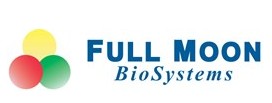
Microarray Scanner Validation Slide is designed for the general validation and evaluation of microarray scanners. With the help of a Validation Slide, users can verify whether a scanner operates properly by assessing the response accuracy of scanning lasers, PMT, and laser filters. This slide also allows user to detect channel cross-talk within one scanner unit and performance variations among different microarray scanners.
This Validation Slide has also been developed to function as a demonstration slide, useful for demonstrating the overall performance and features of a microarray scanner.
The Slide contains arrays of Cy3 and Cy5 fluorescent dyes in dilutions series. Formatted in two blocks, the unique arrays contain spots of great morphology and consistency.
An excellent tool for scanner evaluations.
Key Features
- General evaluation of laser responses, PMT responses, laser filters, laser focus and alignment, and channel-to-channel cross-talk
- Detecting and analyzing performance variations in different microarray scanner units
- Use as a demo slide during microarray scanner demonstrations
- Determine scanning uniformity and stability
- Detect channel-to-channel cross-talk
- Check laser and hardware alignment
- Assess and verify scanner’s general functionalities

Details
- Array dimensions:
Two identical blocks of Cy3, Cy5, and Cy3/Cy5 mixture
Each block: 29 columns x 12 rows
- Slide size: 3” x 1” x 1.0 mm
- Package includes: one Validation Slide
- Storage condition: room temperature, avoid exposure to light
- Warranty: 3 months
| Catalog No | Description | Size | Price |
|---|---|---|---|
| SCV01 | Scanner Validation Slide | 1 slide/pk | $750 |
* Scanner Validation Slide is intended to used as a reference tool only and should be not used as an absolute standard. Verification of results using other methods is strongly recommended. Full Moon BioSystems is not responsible for any claims made by the users of this product.
美国FullMoonBioSystems公司成立于2001年,专注于蛋白组研究的创新研究,其特色的蛋白芯片产品的所有抗体都通过专利的3-D聚合材料固定在高质量的玻片表面,从而确保抗体芯片产品高度的有效性和特异性。芯片上包含经过验证的抗体、阳性参照、阴性参照等。为了增大数据的可信度,每个抗体都进行了六次重复.产品及服务特点适用于高通量蛋白表达研究 高度优质的原料抗体专利的3-D聚合材料芯片片基高度特异性,信号强,低背景噪音蛋白的标记、检测方便可行,常用的芯片扫描仪样品用量少:每个检测只需要5μg蛋白真实样品和比例:组织细胞全部的直接裂解物,无需提纯,非变性:真实比例,天然构象聚焦信号通路:每个芯片集中特定信号传导通路,采用精选的优质抗体六次重复,保证数据的稳定性标准规格的芯片:方便实验和扫描适用普通芯片扫描仪应用范围 高质量的蛋白质表达谱分析检测蛋白表达水平的变化(正常vs.病理、正常vs.药物处理)识别候选标志物大多数芯片同时适用于人、大鼠、小鼠
蛋白质作为生物功能的直接执行者,其表达水平的改变能直接地影响着生命体生物功能的发挥。因此,找到关键实验样本中表达水平发生变化的关键蛋白是科学研究的重要切入点。 蛋白表达抗体芯片——充分结合了生物芯片技术高通量优点和抗原/抗体反应敏感性和特异性原理,实现了蛋白质表达水平的精确高通量筛选。相比传统的Western Blot、ELISA、IHC等研究手段,抗体芯片可以一次性对上千种蛋白质的表达量进行定性定量地检测,在提高工作效率的同时,更能节省宝贵的样品。 相比蛋白质谱技术,抗体芯片的抗原/抗体反应原理与WesternBlot等技术更加接近,因此,抗体芯片检测出的差异蛋白重现性比蛋白质谱更高。同时,针对细胞因子等分泌型蛋白,抗体芯片的灵敏度更高。对于血清/血浆样品的检测,抗体的特异性很大程度地避免了高丰度蛋白的影响,检测精度较蛋白质谱要更高。 苏州蚂蚁淘生物医药科技有限公司提供种类丰富的蛋白表达抗体芯片产品及技术服务,既包括蛋白质广谱筛选抗体芯片,也包括特定类型蛋白的表达检测抗体芯片,如:细胞因子抗体芯片、趋化因子抗体芯片、炎症因子抗体芯片、生长因子抗体芯片、血管生成因子抗体芯片、基质金属蛋白酶抗体芯片、脂联因子抗体芯片等。
抗体芯片种类:抗体芯片特点: 50uL的液质样本、200ug的总蛋白量即可完成多指标检测;适用于血清/浆、培养上清及细胞、组织裂解液等多种生物样本;可以有效避免采用传统方法所引入的批次间实验误差;扩大单个样本的信息量并可做不同分析物间的交互分析。 抗体芯片原理: 抗体芯片文献:Izzotti A, et al. Relationships between pulmonary microRNA and proteome profiles, systemic cytogenetic damage and lung tumors in cigarette smoke-exposed mice treated with chemopreventive agents. Carcinogenesis, 2013, 34(10): 2322-2329.Straussman R, et al. Tumour microenvironment elicits innate resistance to RAF inhibitors through HGF secretion. Nature, 2012, 487(7408): 500-504.Bagnis A, et al. Aqueous humor oxidative stress proteomic levels in primary open angle glaucoma. Exp Eye Res, 2012, 103: 55-62.Moon K M, et al. The effect of secretory factors of ADIpose-derived stem cells on human keratinocytes. Int J Mol Sci, 2012, 13(1): 1239-1257.Saccà S C, et al. New proteins as vascular bioMarkers in primary open angle glaucomatous aqueous humor. Invest Ophth Vis Sci, 2012, 53(7): 4242-4253.Yalcin A, et al. Nuclear targeting of 6-phosphofructo-2-kinase (PFKFB3) increases proliferation via cyclindependent kinases. J Bio Chem,2009, 284(36): 24223-24232.Tang Y L, et al. Hypoxic preconditioning enhances the benefit of cardiac Progenitor cell therapy for treatment of myocardial infarction by inducing CXCR4 expression. Circ Res, 2009, 104(10): 1209-1216.
ebiomall.com






>
>
>
>
>
>
>
>
>
>
>
>









